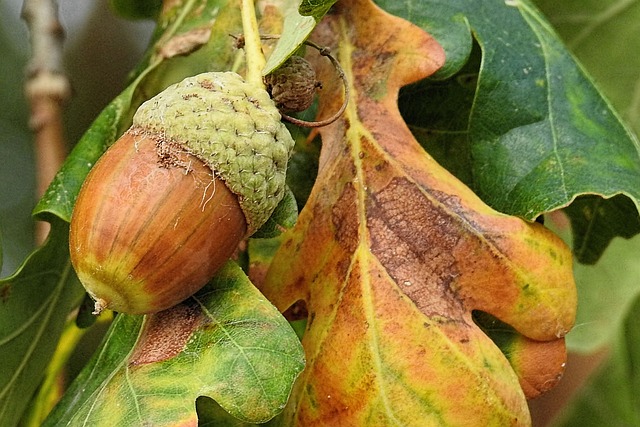By BY DAVE DECALESTA, originally published in the Keuka Lake Associations September Newsletter
The red and white oaks found on hillsides above Keuka Lake produce acorns in fall which are critical
for the winter survival of many species of wildlife. Acorns are rich in fats, which animals need for
energy when there are few other sources available in winter. Some, like bears, deer and (surprisingly)
ducks, gorge on acorns in fall and convert acorn fat into their own fat which they then draw upon when
food is scarce. Some, notably deer and turkeys, dig and scratch about in winter under the snow to
find and eat acorns. Other critters, squirrels and blue jays, bury the acorns and dig them up during
winter when they begin to run out of energy. The FAQs:
How do birds like ducks, turkeys, and jays eat acorns without teeth? Seed-eating birds have a
muscular gland called the gizzard (that chewy lump of muscle your mom cooked up with giblets in
Thanksgiving Day gravy) that food passes through before it gets to the stomach. The birds swallow
gravel and small stones that lodge in the gizzard. When seeds pass into the gizzard, a series of
muscular contractions grind up the seeds—acorns—and release the nutrients into the stomach.How do squirrels and jays find the acorns they bury? For years, scientists puzzled over this.
Then, in what could be called torture-science, they tested how squirrels found the acorns they hid. It
wasn’t smell – squirrels found their own cached acorns at a much higher rate than other squirrels.
Turns out squirrels (and probably jays) invented GPS systems eons before Garmin or Magellan.
When squirrels were allowed to bury acorns, and then nearby shrubs and small trees were moved or
removed, the squirrels dug in the wrong places. Their landmarks were gone and their GPS systems
didn’t work.
Are all acorns created equal? Nope. Red and white oaks have different leaves and acorns: red oak
leaves have pointed lobes and the acorns are squatty whereas white oak leaves have rounded lobes
and the acorns are elongated. And there’s more: red oak acorns have a higher tannin content than
white oak acorns, making them more bitter and less palatable. That’s why in a good acorn year (about
every 3-5 years) there are more red oak acorns lying around that whites, which have been scooped up
avidly. And, squirrels treat them differently. White oak acorns germinate in fall, so if squirrels want the
acorn and all its fat available in winter, they bite into the acorn point (growing point) to prevent the
acorn from germinating and using some of the stored fat. They don’t do that with red oak acorns,
which germinate in spring, thus leaving all the goodies intact during winter. How do squirrels know
about that?
Squirrels and jays are Johnny acorn seeders: By dispersing acorns far from the parent trees,
squirrels and jays insure spreading the oaks farther than just below the tree. Also, burying the acorns
hides them (somewhat) from ducks, turkeys, and deer. And from the acorn weevil.
Perhaps most importantly, burying acorns hides them from the acorn
weevil, which drills into acorns and lays an egg, which turns into an acorn
maggot that eats up the insides of the acorn, leaving no food for wildlife,
and no future oak tree. Acorn weevils are a serious pest of acorns, and
account for most of the mortality (after that caused by being eaten by
wildlife). Let’s hear it for the squirrels and jay!









